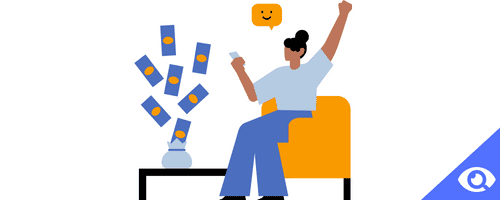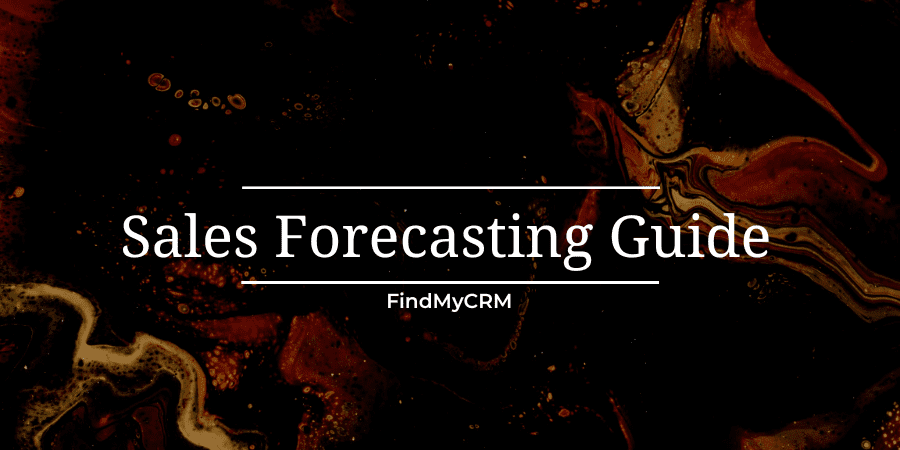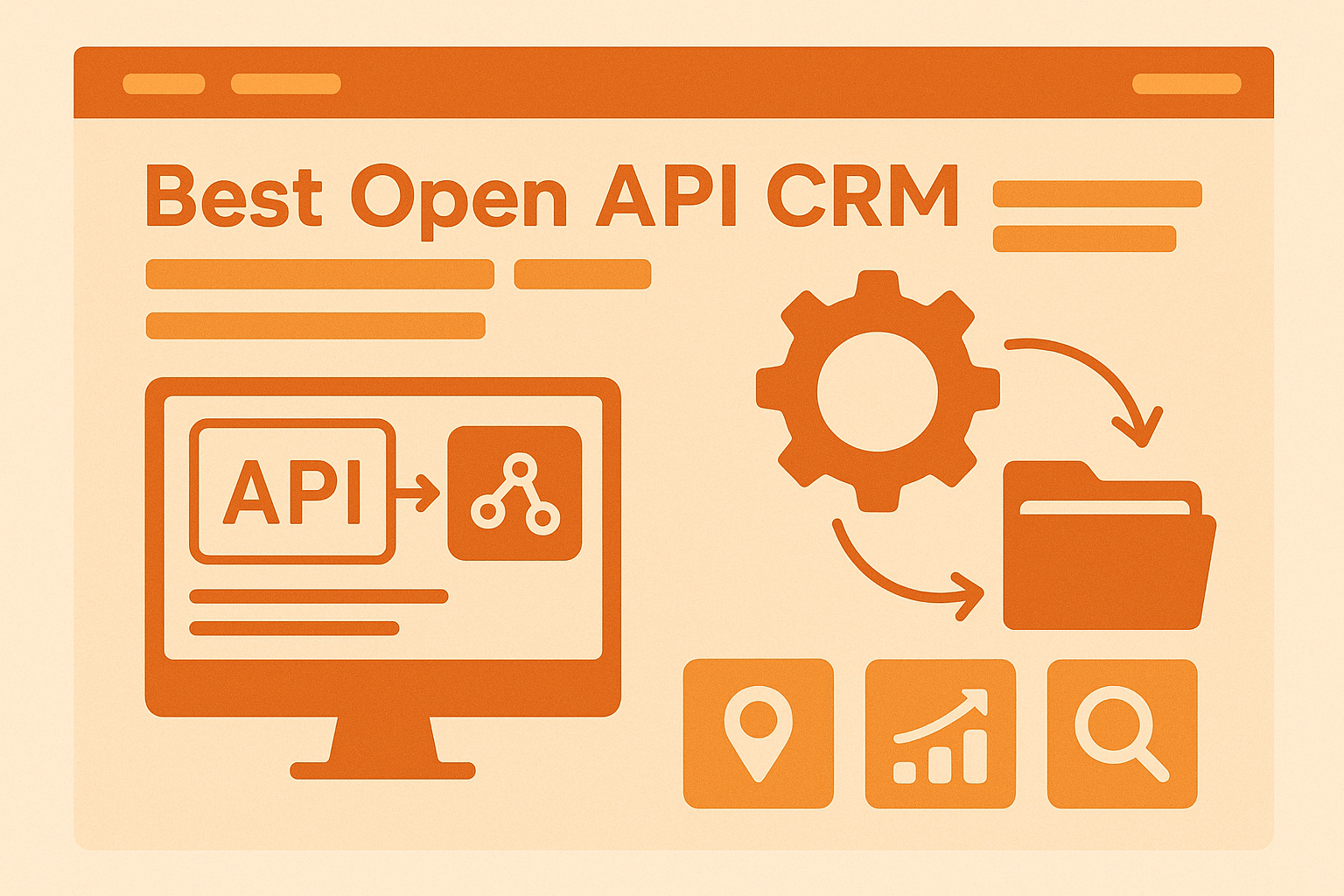Download Now: Free "Sales Forecasting Guide" eBook
What is a sales forecast?
A sales forecast predicts the revenue from future sales. Sales forecasts often take into account historical data, industry trends, and the status of the sales pipeline. Businesses use the sales forecast to predict weekly, monthly, quarterly, and annual sales totals.
You can forecast sales faster and easier using such CRM systems as:
Similar to a weather forecast, your team should consider your sales forecast as a plan to work from rather than a precise prediction. In addition, sales forecasting differs from sales goal-setting. A sales forecast predicts what will happen regardless of your aim, whereas a sales goal describes what you want to happen.

Why do you need to establish sales forecasts?
Every business should use sales forecasting. Below are a few of the top reasons.
Accurate financial planning
The CFO and financial team use sales forecasts to determine how much cash will be coming into a company. Businesses can then decide how best to use that capital and predict how much profit they can expect over a specific time period.
Sales activities planning
Executives who are planning sales can benefit from a sales forecast. These executives will know, for example, how many salespeople to hire and what quotas and targets to assign to each of those salespeople. This means that an accurate sales forecast can help salespeople understand and achieve their goals.
Marketing coordination
A sales forecast will significantly affect marketing. For instance, the sales forecast can show that sales are falling and that marketing needs more significant investment. It might also indicate that a specific product or service fails to deliver appropriate amounts of value.
Inventory management
Businesses can determine how much inventory they need to buy and retain using a sales forecast. This is crucial because it assists companies in finding the right balance between overstocking and running out of materials.
Prices stability
An accurate sales forecast enables companies to keep the cost of their products and services stable. Unpredictable pricing changes may be necessary because of a poor sales forecast. This tactic, which is frequently the result of panic, puts a company's profitability at risk. In this case, you should have the proper strategy to avoid it.

How to create accurate sales forecasts?
The most crucial requirement for a good sales forecast is good data. So, collecting good data is essential. New businesses may have to rely on industry standards or even educated guesses if they don't have a lot of data about their own sales process. However, more established businesses can forecast future performance using their historical data.
[Related Article: How To Build A Sales Pipeline To Seal More Deals Faster?]
Here are the steps you should do before you begin to think about how to forecast sales:
1. Document your sales process
It will be difficult to predict whether any single deal will close, without a documented sales process describing the actions and steps it takes to close a deal.
2. Define sales targets or quotas
While your goals and forecast may differ, without a target you cannot evaluate whether your forecast is good or bad. So, the entire sales team, as well as each rep need their individual quota.
3. Set a benchmark or a current average of some basic sales metrics
Forecasting will be significantly simpler if there are quick and easy ways to measure the following basic sales metrics:
- The time it takes the customer shows interest.
- The time it takes to close a deal.
- The average cost of a deal.
- How long it takes to onboard a new customer?
- Average renewal or rates, or how often you get repeat business.
- Conversion rates at every stage of the sales process.
In general, you want to determine the average duration and efficiency of your sales process.
4. Analyze your current sales pipeline
Make sure your CRM is up-to-date and accurate, and that you know what’s in your current pipeline. Forecasting is more challenging, but not impossible, without a CRM.
5. Identify market trends
It`s time to project all the market events you have been following. Are you or any of your rivals planning to go public? Do you plan to make any acquisitions?
6. Track competitors
You probably already do this but pay attention to the products and marketing campaigns of rivals, especially the industry leaders. Moreover, monitor to see if new competitors may be entering your market.
7. Add business plans
Include all of your company's strategic plans. Are you trying to grow? What are the annual hiring projections? Are you focusing on any new markets or starting any new marketing campaigns? How might this affect the forecast?
After you have quantified these factors, include them in your forecast. Everything should be itemized so that you can understand the forecast at the most detailed level. You should be able to zoom in or out as far as necessary because various company stakeholders will probably want to understand different aspects of the forecast.
[Related Article: Sales CRM and Reasons Why You Need One]

Success factors in sales forecasting
Many elements, such as effective organizational coordination, automation, reliable data, and an analytics-based process - are necessary to increase the accuracy of your sales forecasts and the efficiency of the forecast methodology. Sales forecasts should ideally be:
- Cooperative. Leaders should combine thoughts from different sales roles, company units, and regions. Frontline sales staff can be very helpful in this case by providing a perspective on the market you hadn't previously considered.
- Data-driven. Subjectivity, which is frequently more retrospective than prospective, can be reduced by the use of predictive analytics. Using common data definitions and baselines will encourage alignment and save time.
- Produced in real time. Sales leaders may get insight quickly and make more informed decisions by investing in the ability to reforecast or course-correct in real time. This allows them to immediately and precisely update the forecast according to changes in demand or the market.
- Single-sourced with multiple views. You have excellent insight into rep, region, and company performance when the forecast is generated as a single source of data and also helps align various business functions across the company.
- Improved throughout time. Use the knowledge gained from an improved sales forecasting process to produce future predictions that are more precise and whose accuracy increases with time when compared to defined accuracy goals.
Businesses with more advanced forecasting processes and tools perform better than their rivals because they have a better understanding of their business drivers and can predict the outcome of a sales period before it closes.

Sales forecasting methods
You can predict sales using a variety of methods. Many businesses combine two or more techniques for sales forecasting to generate multiple types of forecasts. In this way, they can compare the best-case and worst-case scenarios. Typical techniques for sales forecasting include:
1. Considering sales professionals' opinions
A common question that sales managers ask their representatives is, "When will this deal close, and how much will it close for?" You can try to make a sales prediction using this technique, but it's not recommended. Sales representatives tend to overestimate sales projections, and with this method, there is no repeatable process to generate a consistent forecast. Unfortunately, this method is still used by many companies to forecast future sales.
2. Relying on historical data
With this technique, you predict how well you'll perform in the present based on your past performance in similar circumstances.
For instance, you might know that your company typically grows at 10% annually, and that same month last year, you closed $100k in new business. As a result, you may then predict that this month's revenue will be $110k. Although this method is a little bit more precise, it ignores other factors that might have changed in the last year, such as the number of sales representatives you have or the performance of your rivals.
3. Utilizing deal stages
Using this forecasting technique, you assign each stage of your sales process a chance of closing a deal. If you want to estimate how much money you may expect to earn, multiply that probability by the size of the opportunity at any given time.
This forecasting technique is even more effective and very well-liked due to its simplicity. Its weakness is that it ignores the opportunity's age. Are two opportunities that have scheduled a sales demo actually equally likely to close if one is three weeks old and the other is three months old?
4. Sales cycle forecasting
In order to estimate the strength of the pipeline, an alternative forecasting method is to use the age of the sales opportunity rather than the probability. It compares the length of time a deal has been in the pipeline with the typical time it takes to close a deal. If you have various products and various sales cycles depending on whether you’ve had a referral or you’re following up a lead from prospecting, then you’ll need to separate those to get a prediction for how likely a deal is to come off.
This technique requires accurate data. Everything needs to be properly logged in the CRM to see what kind of lead it is and how long it has been in the system. Your reps might need to enter a lot of data if you don't have a CRM that records it quickly and easily.
5. Pipeline forecasting
Even though this method is much more precise, it still depends more on accurate data. It reviews each opportunity in your pipeline and analyses it based on several factors, which could include age, deal type, and deal stage. This is a really advanced method, so it's unlikely to succeed without special software that can analyze the data of your pipeline.
6. Making use of a custom forecast model with lead scoring and multiple variables
This forecasting technique combines all of the mentioned factors. It is more complex and has greater depth than the pipeline forecasting method, despite some similarities. These forecasts are typically created using an analytics tool or advanced CRM reports. Also, you need extremely accurate information in the first place, so you are relying on your reps to input a lot of precise data.
This technique of all sales forecasting methods can be the most accurate if you have those resources. You can also consider an opportunity's age, where it is in the sales process, the characteristics of the prospect that increase their likelihood of making a purchase, and more.

Sales forecasting examples
Now that we’ve looked at various methods and types of sales forecasting, let's look at some instances of how medium-sized and large enterprises use sales forecasting.
Intuitive forecasting
Let's consider a new online shoe shop as an example. You can create an intuitive forecast without historical sales data relying on:
- Seasonality
- Market trends
- Social media trends
- The sales and marketing team's educated guesses
- Monthly sales (during the period you have been in business)
The sales team can forecast future sales for the next month, quarter, or year using this data. For instance, they would forecast $1,200,000 in sales for the following year if the first two months see an average of $100,000 in shoe sales.
Historical forecasting
Let's take a look at the same company after three years. Now, they are using actual sales data and historical data, so they can create a financial forecast that is more precise. They would only review the sales from the previous year and forecast similar outcomes for the coming year.
For instance, they could forecast quarterly sales of $300,000 if they earned $1,200,000 last year. Historical forecasting does not take into account factors such as seasonality that affect shoe sales. However, the projection can be helpful when determining sales goals or looking for growth opportunities. How can your sales process or marketing strategies be changed to shorten your sales cycle and increase your chances of closing if you're not satisfied with last year's sales numbers?
Length of sales cycle forecasting
Perhaps the business wants to monitor the effectiveness of its sales process after using influencer marketing, inbound marketing, and Instagram advertising. They want to monitor leads, how quickly those leads move through the funnel, and their likelihood of closing.
In comparison to the methods mentioned above, this will provide a more precise forecast. Determine the length of the sales cycle for each type of customer using historical data. According to the length of the average sales cycle, categorize each potential sale. You can estimate the cost of each sale as well as the likelihood that each type of deal will close using this data.
Let's use a straightforward instance where leads from Instagram advertisements take an average of one month to close, with an average sale of $100. The probability of closing, based on historical data, after an Instagram user has visited the site is 50%. If Instagram advertisements have generated 3,000 visitors, 2,000 sales at $100 each over the following 30 days would result in a total of $200,000 in sales for the month.
Multivariable forecasting
A multivariable forecasting analysis, which integrates multiple sales forecasting models to account for a variety of factors that affect a company's sales growth, may produce more accurate predictions than any of the techniques described above.
An e-commerce retailer can combine the above factors with seasonality to account for sales spikes during different seasons, such as back-to-school time and other circumstances. In order to increase sales forecasts, they might also look at market trends and what's popular on social media. If they sell a lot of the season's hottest styles, this will increase sales.

Sales forecasting templates
If you're working on your calculations for the sales forecast in Microsoft Excel, you can find a huge selection of sales forecasting templates online. You can use these templates to complete the task quickly and according to a standard format.
[Related Article: Top 7 Sales CRM]
Wrapping up
Sales forecasting can be a tedious, long process that requires a large group of sales representatives, managers, and leaders to spend days in meetings and looking at reports. But take note that we said can.
That’s because if you're tech-savvy, you can get your sales forecasting software to take care of everything for you or at the very least speed up the process.





